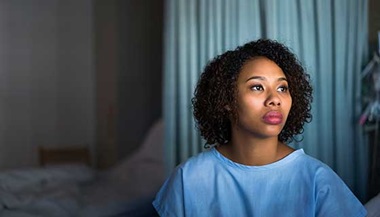Breast Cancer: 5 Things to Know About Your Breasts
How often should you get a breast exam? Can you reduce breast cancer risk? Continue reading to learn five important breast facts.

Family History Is Only Part of Cancer Risk
One common misconception around breast cancer is thinking you’re not at risk if you don’t have a family history of breast cancer.
“Only 12 percent of people diagnosed with breast cancer have any family history of breast cancer,” says Lillie Shockney, a breast cancer survivor and co-developer of Work Stride – Managing Cancer at Work program. Other risk factors you need to be aware of include a sedentary lifestyle and taking hormone replacement therapy (HRT).

Start Breast Exams Early and Mammograms at 40
You should have annual breast exams at the doctor’s office starting at 18 and have annual mammograms starting at 40. You should also be examining your own breasts monthly, at the end of your menstrual period when breasts are least tender.
“You should know your breasts better than anybody,” says Shockney, adding that you should alert your doctor if you notice any changes, such as a lump, swelling, nipple discharge or nipple inversion.

Dense Breasts Need Special Screening
Many women have dense breasts, which means their breasts have a high proportion of glandular tissue containing milk-producing cells and fibrous tissue as compared to fat. Some believe dense breasts may increase cancer risk, though age and weight are more important risk factors.
Dense breasts also make it harder for radiologists to detect cancer. As a result, women with dense breasts may need an ultrasound or MRI scan for follow-up testing.

HRT Can Fuel Cancer Growth
Many women use HRT to address symptoms of menopause, such as hot flashes and mood swings. While HRT doesn’t cause breast cancer, we know that estrogen, a female hormone found in HRT, fuels breast cancer cells.
“If you’re destined to get breast cancer, HRT can speed its arrival by as much as a decade,” says Shockney.

Pay Attention to Breast Rashes
Inflammatory breast cancer is an aggressive cancer that shows up as a rash, with symptoms that include:
- Redness
- Swelling
- Pain and/or itchiness
- Severely enlarged pores on the breast
Doctors often misdiagnose inflammatory breast cancer as dermatitis (skin infection) or mastitis (breast tissue infection) because it looks like a rash.
“If the rash doesn’t respond to antibiotics in five days, your doctor needs to take a skin sample to test for cancer,” says Shockney.
Learn more about breast cancer treatment at Johns Hopkins.






